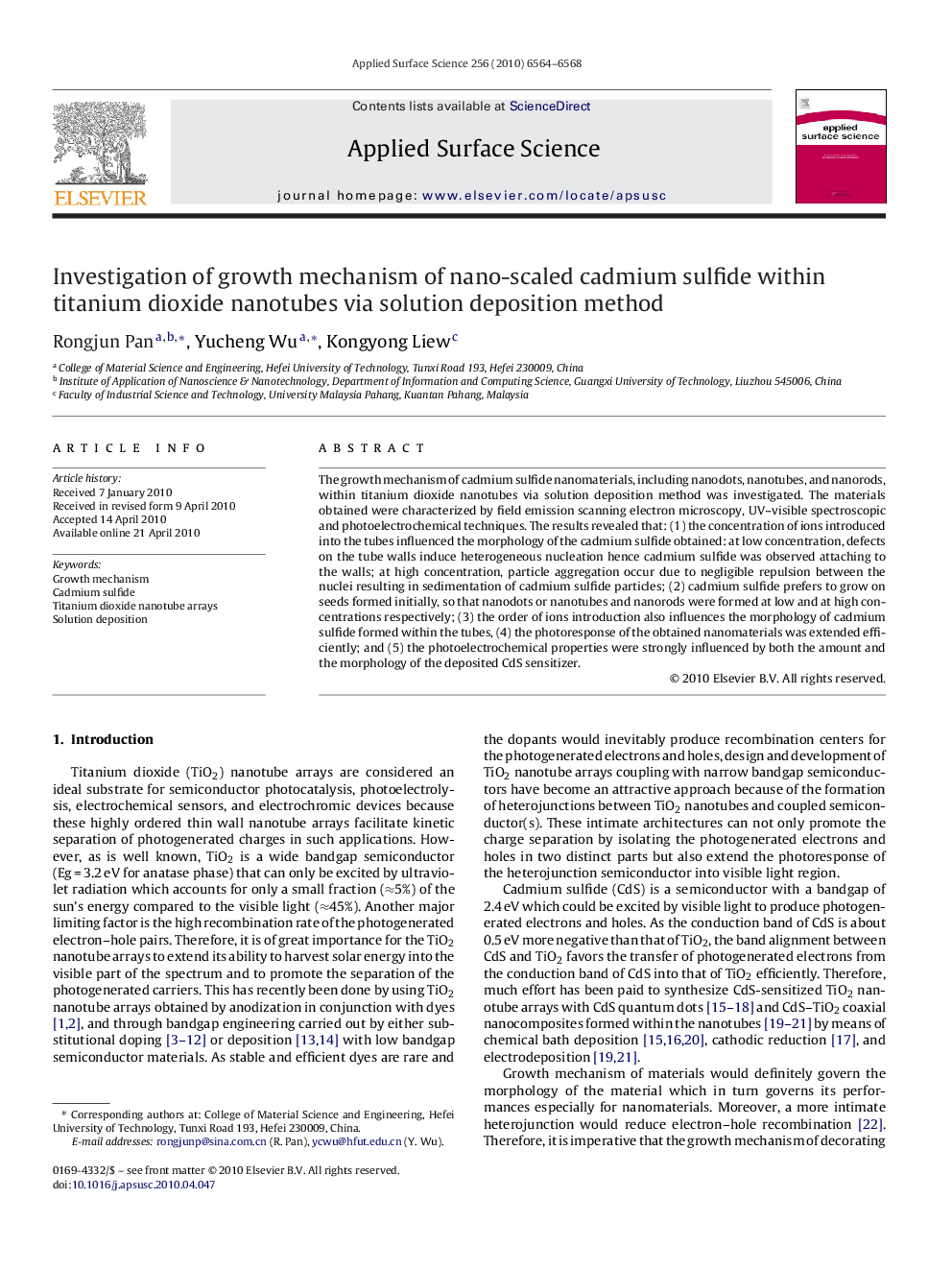| Article ID | Journal | Published Year | Pages | File Type |
|---|---|---|---|---|
| 5365460 | Applied Surface Science | 2010 | 5 Pages |
The growth mechanism of cadmium sulfide nanomaterials, including nanodots, nanotubes, and nanorods, within titanium dioxide nanotubes via solution deposition method was investigated. The materials obtained were characterized by field emission scanning electron microscopy, UV-visible spectroscopic and photoelectrochemical techniques. The results revealed that: (1) the concentration of ions introduced into the tubes influenced the morphology of the cadmium sulfide obtained: at low concentration, defects on the tube walls induce heterogeneous nucleation hence cadmium sulfide was observed attaching to the walls; at high concentration, particle aggregation occur due to negligible repulsion between the nuclei resulting in sedimentation of cadmium sulfide particles; (2) cadmium sulfide prefers to grow on seeds formed initially, so that nanodots or nanotubes and nanorods were formed at low and at high concentrations respectively; (3) the order of ions introduction also influences the morphology of cadmium sulfide formed within the tubes, (4) the photoresponse of the obtained nanomaterials was extended efficiently; and (5) the photoelectrochemical properties were strongly influenced by both the amount and the morphology of the deposited CdS sensitizer.
